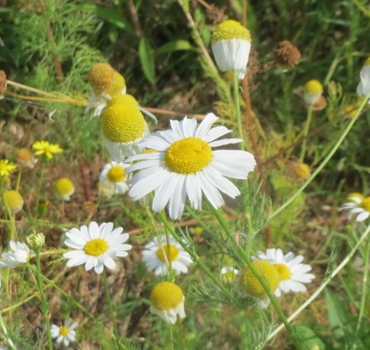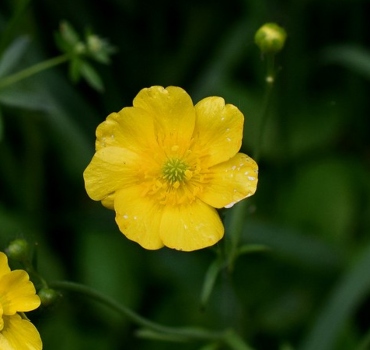Section 6.2
Status of Non-native Vascular Plants
26 speciesof non-native vascular plants were detected in the Al-Pac FMA area.
Within the Al-Pac FMA area, 39% of ABMI sites sampled had at least one non-native vascular plant species present. Where they were found, about two non-native species occurred per site.

Alsike Clover (Trifolium hybridum)
Photo: Diane Haughland

Crested Wheatgrass (Agropyron cristatum)
Photo: ABMI

Common Dandelion (Taraxacum officinale)
Photo: Radu Chibzii
Introduction
Non-native plants are those species that have been introduced, intentionally or otherwise, into new areas beyond their natural range. While non-native plants do not currently present a large risk to native biodiversity in boreal forests, given the right conditions, they could become a bigger management challenge. For example, some non-native plant species, like the Creeping Thistle and Narrow-leaved Hawksbeard, can interfere with tree regeneration after fire or forest harvesting[1]. As human activities such as forestry and oil and gas development increase in northern Alberta, creating favourable environmental conditions for weeds to establish and spread, non-native species like these could become more of a concern.
Early action is the most effective way of managing non-native species before serious impacts have occurred. The ABMI's monitoring data are a means to assess the current distribution of non-native species and detect trends in their distribution through time, serving as an early warning signal of potential risks to native biodiversity. ABMI data can be used by managers to set regional targets for non-native plant management and to measure progress toward achieving those targets.

Scentless Chamomile (Tripleurospermum inodorum)
Photo: Andreas Rockstein
Results
The number of unique non-native vascular plant species detected in the Al-Pac FMA area and AEI is:
The ABMI found 26 non-native plants in the Al-Pac FMA area (Table: Non-native Vascular Plants). Most non-native species occurred infrequently in the FMA; 21 of the 26 species occurred at 5% or fewer ABMI sites.
Highlights:
- At sites where non-native plants were found, 1.9 non-native species were detected on average.
- Common Dandelion was the most abundant non-native plant, occurring at 23.4% of ABMI sites in the Al-Pac FMA area, followed by Alsike Clover (9.9%) and Timothy (6.4%).
- Of the 26 non-native species currently detected in the Al-Pac FMA area, 16 were reported as of 2009 and 22 as of 2015 reporting. The four additional non-native species detected in the Al-Pac FMA area between 2015 and 2020 reporting were Quack Grass (2.1%), Watercress (1.4%), Cicer Milk Vetch (0.7%), and Orchard Grass (0.7%). Rather than being new arrivals to the region, these species were likely present in the FMA area prior to this current reporting period but were not detected.
- Several of the non-native species that have been detected in the Al-Pac FMA area are cultivated as hay and forage crops in agricultural settings. These include Alsike Clover, Crested Wheatgrass, Meadow Bluegrass, Red Clover, Timothy, and White Clover.
- Four of the non-native species detected are listed under the Alberta Weed Control Act, including Creeping Thistle (4.3%), Perennial Sow Thistle (2.8%), Tall Buttercup (0.7%), and Scentless Chamomile (0.7%).
These results have benefited from collaboration between the ABMI and various partners and contributors. More details are available in Collaborators and Contributors.
| Image | Common Name | Scientific Name | Occurrence (%) | Status |
|---|
References
Sanderson, L.A., J.A. McLaughlin, and P.M. Antunes. 2012. The last great forest: a review of the status of invasive species in the North American boreal forest. Forestry:329-339

Tall Buttercup (Ranunculus acris)
Photo: John Munt





